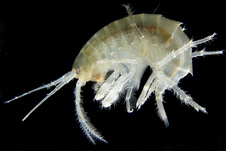

Home > Testsystems

Testsystems
AlamarBlue Assay , Ames Test , Bacteria Contact Test , Comet Assay , Cytochrome P450
Cytotoxicity Test , Electron microscopy EROD Assay , Fish Embryo Test , Fish Sexual Development Test ,
Histopathology , Life Cycle Test , Limnology , Respirometry , Cell culture
In vitro-test procedures
The Bacterial Contact Test is especially useful for the analysis of sediments, suspended matters and soil samples, since the test organism Arthobacter globiformis, one of the most common soil organisms, is also in contact with the examined medium by nature. Given their function as destruents and their high abundance in soils and sediments, microorganisms are outstanding bioindicators for these compartments. They form a system which represents an organism and a cell simultaneously, where, as a result of the short generation time, acute toxicological effects can be observed as well as chronical effects. Another advantage of this test is the fact that it can be performed relatively fast within one to one and a half days, since microorganisms take up pollutants considerably faster than higher organisms. The Bacterial Contact Test is, therefore, recommended as a simple screening test within a test battery for sediment quality assessment. The test has been specified as DIN 38412 L48.

Die BThe biotransformation of lipophilic xenobiotics into water-soluble, excretable products is performed most commonly by enzymes of the cytochrome P450 family and incompasses primarily oxidation, reduction and hydrolysis. The CYP1A-subfamily metabolizes particularily PAHs, PCBs, dioxines and furans. These pollutants activate the CYP1A enzyme system by the cytosolic aryl hydrogen receptor, while the binding strength of the ligand is proportional to the level of gene expression and, thus, toxicity.
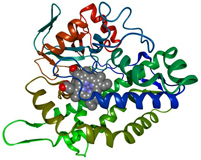
EROD Assay: This test system is one of the most commonly applied methods for the analysis of CYP1A induction. The induction of CYP1A is measured through the activity of the biotransformation enzyme 7-ethoxyresorufin-O-dethylase (EROD). In the presence of NADPH (nicotinamide adenine dinucleotide phosphate), this enzyme is capable of deethylating the synthetic substrate 7-ethoxyresorufin into fluorescent resorufin. Usually, EROD values are normalized with reference to TCDD.
Acute damage tof cells is commonly measured through the endpoint neutral red retention. This endpoint was described in in vitro-cytotoxicity tests for the first time by Borenfreund and Puerner (1984) in a mouse cell line. This viability test is based on the assumption that only intact cells are able to retain the slightly alkaline dye neutral red in their lysosomes. If either the cellular membrane or the lysosomal membrane is damaged by cytotoxic substances, this will be mirrored by diminished dye retention, which can then be detected by photometric measurement.
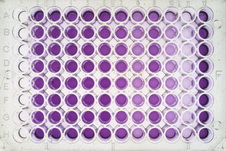
Fish Embryo-Test: During the past years, the Fish Embryo Test with the zebrafish (Danio rerio) has received increasing attention as an alternative method for the conventional acute Fish Test. The Fish Embryo Test is characterized by its low time effort and the low volume of the samples needed. Additionally, beside the high state of knowledge regarding its developmental biology, the major advantages of zebrafish are: (1) zebrafish can easily be bred under laboratory conditions, (2) on daily basis, females spawn up to 200 eggs, which are transparent and show a highly constant development. In the Fish Embryo Test, different acute and sub-lethal toxicological endpoints can be recorded, thus allowing a differentiated assessment of the damaging potential of various samples.
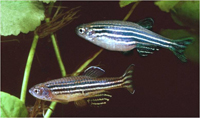
Genotoxicity
Several sustance classes are known to have genotoxic and mutagenic properties; among those are PAHs, nitrosamines, heavy metal salts and halogenated compounds (e.g. PCBs). To proof the damaging potential of such substances, the Ames Test, the Comet Assay and the Micronucleus Test are usually applied in our group.
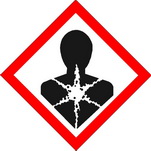
Ames-Test: One of the most commonly used prokariotic test for the determination of the mutagenic potential of water and sediment samples is the Ames Test with Salmonella typhimurium. Salmonella typhimurium. Two histidine deficient (his-) strains (TA98 and TA100) are exposed to a test substance. The number of histidine-competent (his+) colonies generated by frameshift (TA98) or base exchange mutations (TA100) indicates the mutagenic activity of the examined sample.
Comet Assay: This method is able to detect DNA-strand breaks in almost all eukaryotic cells, which are caused by monosubstances, mixtures or environmental samples. It can detect single and double strand lesions, apurinic/apyrimidinic sites and cross-links. Furthermore, the intensity of the cellular repair indirectly indicates the amount of adducts bound to the DNA.

Micronucleus Test: Developed 30 years ago to measure cytogenetic damage in cells, this test depends on the detection of micronuclei formed during mitosis, when chromatin fragments without centromer are unable to migrate into the nuclei of the daughter cells, but remain in the cytoplasm. Alternatively, failure of the spindle apparatus prevent the inclusion of chromosomes during the anaphase. The micronucleus formation is also induced by radiation or chemicals leading to chromosome breaks or malfunctions of the spindle apparatus.
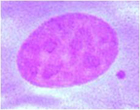
RTL-W1 cells: The fibroblast-like cell line RTL-W1 was generated from primary hepatocyte cultures of the rainbow trout (Oncorhynchus mykiss) by Niels Bols et al. in 1985 and characterized by Lucy Lee in 1993. An important feature of this cell line is its high biotransformation capacity. Therefore, after exposure to PAHs and TCDD, the induction of the enzyme CYP450-1A could be documented at fairly high levels.
RTG-2 cells: Wolf and Quimby have isolated the fibroblast-like RTG2 cells from gonads of the rainbow trout Oncorhynchus mykiss (RTG = rainbow trout gonad) in 1962. To compensate for the low biotransformation capacity of RTG-2 cells, exogenic metabolic activation is required by addition of an S9-Mix, in order to be also able to detext the activity of pollutants developing their toxic effects only after activation by biotransformation enzymes of the P450 family.
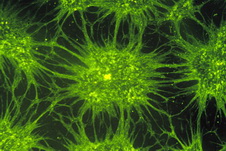
V79-cells: (Information will be provided soon)
In vivo-examinations
Damage to an intact organism caused by environmental chemicals can not only be detected at the level of tissue, but also at the cellular level. The electon microscope allows the detection of effects of environmental chemicals at the cellular or even organelle level. By this method, virtually any organ affected can be examined; however, the major focus is on organs playing a cental role in metabolism, for example the liver.
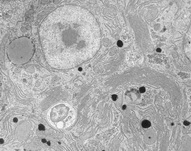
Oxygen is essential for every higher organism to generate a sufficient amount of ATP for energy requirements by mitochondrial oxidative phosphorylation. Therefore, oxygen consumption rate (OCR) is a very important parameter to measure the impact of changing environment or chemical treatment on the overall metabolism of organisms, as well as mitochondrial functions. Multiple channel optical fluorescence oxygen reading devices are well-established tools to measure individual respiration rates of tiny organisms in real-time.
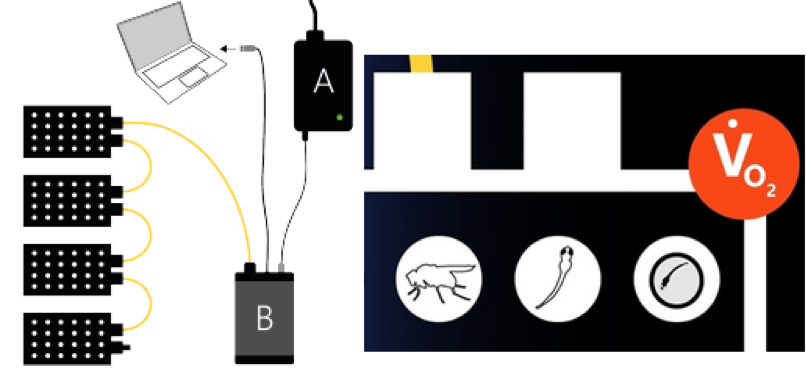
Due to different factors (e.g. environmental chemicals), histopathological changes may occur in various tissues of animals. Depending of the organs affected, these alternations can have negative effects upon the organism or, eventually, even the whole population. By light-microscopical studies, tissues can be analyzed, and the alternations can be evaluated. To this end, paraffin sections are prepared and stained for various cellular components. The visual analysis under the light microscope can be supported by software allowing the quantification of morphometric characteristics of cellular structures.
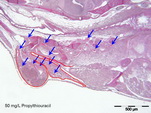
Another possibility to investigate respiration in zebrafish is to measure the metabolic rate in vivo by use of the AlamarBlue® Assay, an indirect measurement of oxygen consumption. This high-throughput test using zebrafish embryos was originally developed by Renquist et. al. (2013). The assay is based on the conformational change of the dark blue non-fluorescent Resazurin into the pink fluorescent resorufin under metabolic reduction and in the presence of oxygen. Resazurin can easily diffuse through cell membranes, where it accepts electrons from metabolic enzymes (i.e. NADH2) during cellular respiration. Hence, changes in resorufin fluorescence intensity are related to metabolic output of the organism and could be measured under different environmental conditions or chemical treatment.
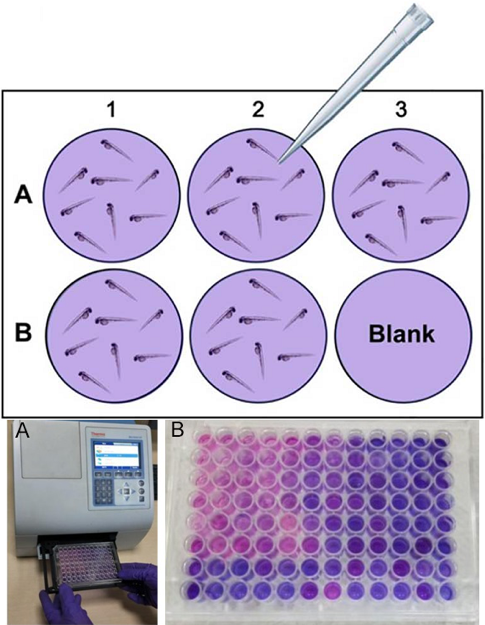
The Fish Sexual Development Test (FSDT) has undergone validation as an OECD guideline and is principally an enhancement of OECD guideline 210, the „Fish Early-life Stage Toxicity Test". The development of the fish gonads is followed over a period of 60 days in order to determine the endocrine activity of the substance of interest. The applied method allows a reliable assessment of the potential endocrine hazard with an adequate logistic and financial input. Various fish species were tested, and, so far, zebrafish (Danio rerio) and medaka (Oryzias latipes) have proven their suitability. Due to the fact that their sexual differentiation and gonadal development is completed after 60 days, this test generates sufficient data regarding endocrine effects such as a shift in the sex ratio, alterations in gonadal maturation, general developmental retardation and general pathology. Alterations in terms of reproductive output cannot be determined in this test, but it can provide an excellent basis for triggering subsequent long-term testing (e.g., full life-cycle tests).
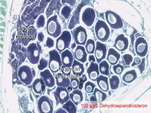
Morphological und chemical-physical parameters of water bodies
For the evaluation of water quality in Germany, a number of hydromorphological, chemical and physical parameters and are recorded on a regular basis and included in the Federal water quality reports (LAWA 1998). Components of these assessments are the characterization of the river course, the condition of the water banks, current velocity, odor, coloration, pH value, electrical conductivity, nitrate, ammonium, nitrite and phosphate concentrations, oxygen contents and the biological oxygen demands. According to the "Länderarbeitsgemeinschaft Wasser" (LAWA), the water quality is classified on the basis of these data and the saprobity index, thus allowing a comparative evaluation of the general ecological status of waters in the field.
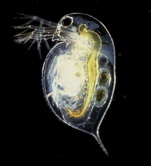
Macrozoobenthos
In the ecological assessment of rivers and streams, apart from the determination of morphological and chemical-physical parameters, the species composition, especially of the barely migrating macrozoobenthos is important. Recording the benthic water course community has the advantage allows the identification of water conditions based upon the long-term presence (or lack) of certain key species.
